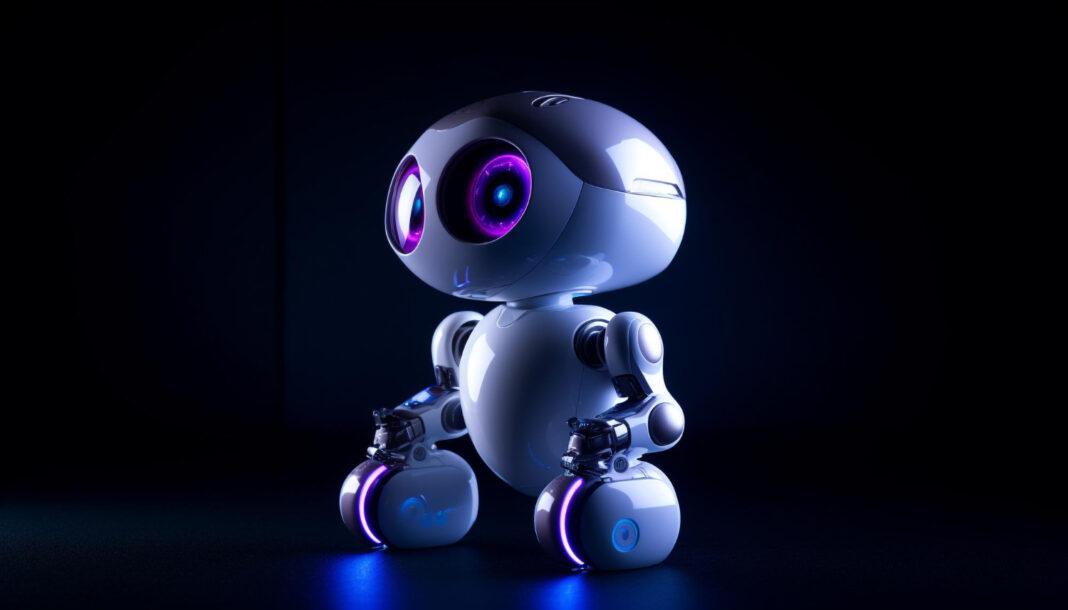Chatbots are becoming more common in today’s digital world, and they are changing how companies talk to their customers. These virtual assistants are capable of simulating human conversations and delivering personalized experiences. As technology continues to advance, chatbots have evolved into various types, each serving different purposes. In this article, we will explore the seven different types of chatbots, ranging from rule-based bots to AI-powered conversational agents. By understanding the features and applications of each type, businesses can make informed decisions about which chatbot best suits their needs and goals. Let’s delve into the world of chatbots and discover the possibilities they offer for enhancing customer engagement and driving business success.
Table of Contents

Introduction to chatbots
What is a chatbot?
Chatbots, the digital darlings of the tech world, are conversational agents designed to simulate human conversation through text or voice interactions. They utilize natural language processing (NLP) and machine learning algorithms to understand and respond to user queries or commands. In simpler terms, chatbots are like virtual assistants that interact with users in a chat-like interface, helping them find information, answer questions, or perform specific tasks.
The benefits of using chatbots
Chatbots offer a range of benefits to businesses, making them a valuable addition to customer service and marketing strategies. Here are a few reasons why chatbots are gaining popularity:
- Enhanced customer support: Chatbots can provide immediate assistance, resolving customer queries or issues round the clock without human intervention.
- Increased efficiency: By automating repetitive tasks, chatbots free up human resources, enabling them to focus on more complex or strategic activities.
- Personalized experiences: With advanced algorithms, chatbots can analyze user preferences and behavior, allowing businesses to deliver tailored recommendations and offers.
- Scalability: Chatbots can handle multiple conversations simultaneously, ensuring prompt responses to user inquiries regardless of the volume.
- Cost-effective: By reducing the need for human agents, chatbots help businesses save on labor costs while offering efficient customer service.
Types of chatbots 01 – Rule-based chatbots
How rule-based chatbots work
Rule-based chatbots, also known as decision tree bots, operate based on predefined rules and conditional statements. These bots follow a set of if-then rules to determine their responses, making them relatively straightforward to develop and manage. The rules are created by human programmers or administrators who anticipate user inputs and design appropriate bot responses accordingly.
Pros and cons of rule-based chatbots
Rule-based chatbots have their own set of advantages and limitations
Pros:
- Simplicity: Rule-based chatbots are easy to build and maintain, making them a good starting point for businesses entering the chatbot arena.
- Control: Administrators have complete control over the responses generated by the chatbot, ensuring consistency and accuracy in customer interactions.
Cons:
- Limited flexibility: Rule-based chatbots lack the ability to handle complex or unpredictable user queries that fall outside their predefined rule set.
- Maintenance challenges: As the number of predetermined rules increases, managing and updating the chatbot’s responses can become time-consuming and cumbersome.

Types of chatbots 02 – AI-powered chatbots
Understanding AI-powered chatbots
AI-powered chatbots, often referred to as intelligent chatbots or virtual agents, utilize artificial intelligence and machine learning algorithms to understand and respond to user queries in a more sophisticated manner. These chatbots can learn from user interactions, adapt to new information, and improve their responses over time. They leverage natural language understanding (NLU) and natural language generation (NLG) techniques, enabling them to interpret and generate human-like responses.
Advantages of AI-powered chatbots
AI-powered chatbots offer several advantages over rule-based counterparts:
- Contextual understanding: AI-powered chatbots can grasp the context of a conversation, allowing them to provide more accurate and personalized responses.
- Continuous learning: These chatbots can learn from every contact with a user, making them better and more suited to their needs.
- Handling complexity: AI-powered chatbots can handle a wide range of user queries and provide more sophisticated responses, even when faced with ambiguous or complex requests.
Limitations of AI-powered chatbots
While AI-powered chatbots bring advancements to the table, they also have certain limitations:
- Training data requirements: AI-powered chatbots rely on vast amounts of training data to learn and generate accurate responses. Building and maintaining this dataset can be time-consuming and resource-intensive.
- Ethical concerns: AI-powered chatbots have the potential to inadvertently learn biases or exhibit unexpected behavior due to the data they are trained on. Ensuring ethical and unbiased chatbot interactions becomes a crucial consideration.

Types of chatbots 03 – Virtual assistant chatbots
Defining virtual assistant chatbots
Virtual assistant chatbots, or VA chatbots, are designed to perform tasks associated with personal assistance. These chatbots aim to replicate the capabilities of human virtual assistants, with the added advantage of automation and scalability. Virtual assistant chatbots can handle a variety of tasks, ranging from scheduling appointments and setting reminders to providing weather updates and booking services.
Applications of virtual assistant chatbots
Virtual assistant chatbots find applications in various industries and sectors, including:
- Customer service: VA chatbots can handle customer inquiries, provide product recommendations, and assist in troubleshooting common issues.
- E-commerce: These chatbots can help users with product search, order tracking, and personalized recommendations based on their purchase history.
- Travel and hospitality: VA chatbots can assist with flight bookings, hotel reservations, and provide information about tourist attractions or local recommendations.
Challenges in implementing virtual assistant chatbots
Implementing virtual assistant chatbots can present some challenges:
- Natural language processing: Ensuring accurate understanding and interpretation of user inputs requires robust natural language processing capabilities, which may pose technical challenges.
- Personalized experiences: Generating personalized responses and understanding user preferences can be complex, especially when dealing with large volumes of data.
- Integration with backend systems: Integrating the chatbot with various backend systems or databases to access relevant information can be a technical hurdle.
Remember, chatbots are here to assist, streamline processes, and engage users in a more convenient and efficient manner. Deciding which type of chatbot suits your business needs requires careful consideration of the specific goals, budget, and technical capabilities. So, choose wisely and embrace the chatbot revolution!
Types of chatbots 04 – Customer support chatbots
The role of customer support chatbots
Customer support chatbots are the superheroes of customer service. They are designed to handle a wide range of customer inquiries, providing quick and accurate responses 24/7. These chatbots can handle repetitive tasks like answering FAQs, providing order updates, and assisting with common technical issues, freeing up human support agents to focus on more complex customer needs.
Features of effective customer support chatbots
Effective customer support chatbots are equipped with a variety of features to ensure a smooth customer experience. They should possess natural language processing capabilities to understand and respond to customer queries accurately. Additionally, they should integrate with other systems like CRM platforms to access customer data and provide personalized assistance. The ability to escalate complex issues to human agents seamlessly is also crucial.
Best practices for integrating customer support chatbots

Integrating customer support chatbots into your business requires careful planning and execution. Start by identifying the most common customer inquiries and designing your chatbot’s responses accordingly. Provide options for customers to speak with a human agent if needed and ensure the transition is seamless. Regularly update and improve your chatbot’s knowledge base to keep up with evolving customer needs. Additionally, gather feedback from both customers and support agents to continuously optimize the chatbot’s performance.
Types of chatbots 05 – E-commerce chatbots
Enhancing e-commerce experiences with chatbots
E-commerce chatbots are revolutionizing the way customers shop online. These chatbots act as virtual shopping assistants, guiding customers through the purchasing process, answering product-related questions, and providing personalized recommendations based on user preferences. They can also assist with order tracking, returns, and even upsell and cross-sell products, enhancing the overall e-commerce experience.
Personalization and recommendations through e-commerce chatbots
One of the greatest strengths of e-commerce chatbots is their ability to offer personalized recommendations. By analyzing user data and purchase history, these chatbots can suggest products that align with a customer’s preferences and buying habits. This level of personalization not only increases the chances of a sale but also improves customer satisfaction and loyalty.
Challenges and considerations for e-commerce chatbots
While e-commerce chatbots offer tremendous benefits, there are challenges to consider. Ensuring accurate product information and inventory updates is crucial to avoid disappointing customers. Integration with e-commerce platforms and payment gateways must be seamless and secure. Additionally, providing a human fallback option for complex inquiries or technical issues is essential to maintain customer trust and satisfaction.
Types of chatbots 06 – Social media chatbots
Leveraging chatbots for social media engagement
Social media chatbots are a game-changer for businesses looking to engage with their audience on platforms like Facebook Messenger or Twitter. These chatbots can initiate conversations, provide personalized recommendations or offers, and even handle simple transactions within the social media platform. They enable businesses to deliver instant and convenient customer service while maintaining a strong social media presence.
Benefits of using social media chatbots for businesses
Using chatbots on social media brings several benefits to businesses. They can automate customer interactions, ensuring prompt responses to inquiries and enhancing customer satisfaction. Social media chatbots also provide valuable insights into customer preferences and behaviors, helping businesses refine their marketing strategies. Additionally, chatbots can handle large volumes of simultaneous conversations, ensuring scalability during peak periods.

Tips for optimizing social media chatbot interactions
To optimize social media chatbot interactions, ensure your chatbot has a conversational tone that aligns with your brand’s voice. Offer menu options or quick replies to guide users through the conversation flow. Regularly monitor and analyze chatbot conversations to identify areas for improvement. Integrate your chatbot with customer data and CRM systems to personalize interactions and provide a seamless omnichannel experience.
Types of chatbots 07 – Voice-enabled chatbots
Exploring the rise of voice-enabled chatbots
The rise of voice-enabled chatbots, powered by technologies like Amazon Alexa and Google Assistant, has transformed the way users interact with technology. These chatbots can understand spoken language and provide responses and assistance through voice commands. Voice-enabled chatbots have found their place in a variety of sectors, from smart homes to customer service helplines.
Advantages of voice-enabled chatbots
Voice-enabled chatbots offer several advantages over their text-based counterparts. They provide a hands-free and intuitive user experience, allowing users to interact with devices while multitasking. Voice recognition technology has improved significantly, enabling more accurate understanding of user commands. These chatbots also offer accessibility to users with visual impairments or those who prefer voice interactions.
Challenges in implementing voice-enabled chatbots
- Implementing voice-enabled chatbots comes with its own set of challenges. Natural language processing and understanding spoken language accurately can be complex. Chatbots must be able to handle different accents, dialects, and speech patterns. Privacy and security concerns around voice data collection need to be addressed.
- Additionally, ensuring compatibility with various voice-enabled devices and platforms is essential for a seamless user experience.In conclusion, chatbots have emerged as powerful tools for businesses to streamline customer interactions, improve efficiency, and deliver exceptional user experiences.
By exploring the seven types of chatbots discussed in this article, businesses can gain insights into the diverse functionalities and applications of these intelligent conversational agents. Whether it’s rule-based bots for basic queries, AI-powered chatbots for advanced interactions, or virtual assistants for personalized assistance, choosing the right chatbot can significantly impact a business’s customer engagement strategy. Embracing chatbot technology opens up new opportunities for businesses to connect with their audience in a more efficient and meaningful way. Stay ahead of the curve by leveraging the potential of chatbots and enhancing your business’s communication channels.
FAQs
1. What are the key benefits of using chatbots for businesses?
Chatbots offer several advantages for businesses, such as improved customer service, 24/7 availability, cost savings in customer support, enhanced engagement and personalization, and increased operational efficiency. They can handle repetitive tasks, provide quick responses, and gather valuable customer data for further analysis and insights.
Can chatbots replace human customer service representatives entirely?
While chatbots can handle many routine and straightforward customer inquiries, they may not be able to replace human customer service representatives entirely. Some complex issues may require human intervention, empathy, and critical thinking skills. The seamless integration of chatbots with human support can create a harmonious and efficient customer service ecosystem.
How can businesses choose the right type of chatbot for their needs?
To choose the right type of chatbot, businesses should consider their specific requirements, budget, and goals. It is essential to evaluate factors such as the complexity of interactions, level of personalization needed, integration capabilities, and the target audience. Conducting thorough research, analyzing use cases, and consulting with chatbot experts can help businesses make an informed decision.
What are the challenges in implementing chatbots?
Implementing chatbots may come with some challenges. These can include designing natural and engaging conversational flows, ensuring accuracy in responses, handling complex or ambiguous queries, integrating with existing systems, and managing user expectations. Adequate testing, continuous improvement, and monitoring customer feedback can help overcome these challenges and optimize chatbot performance.









